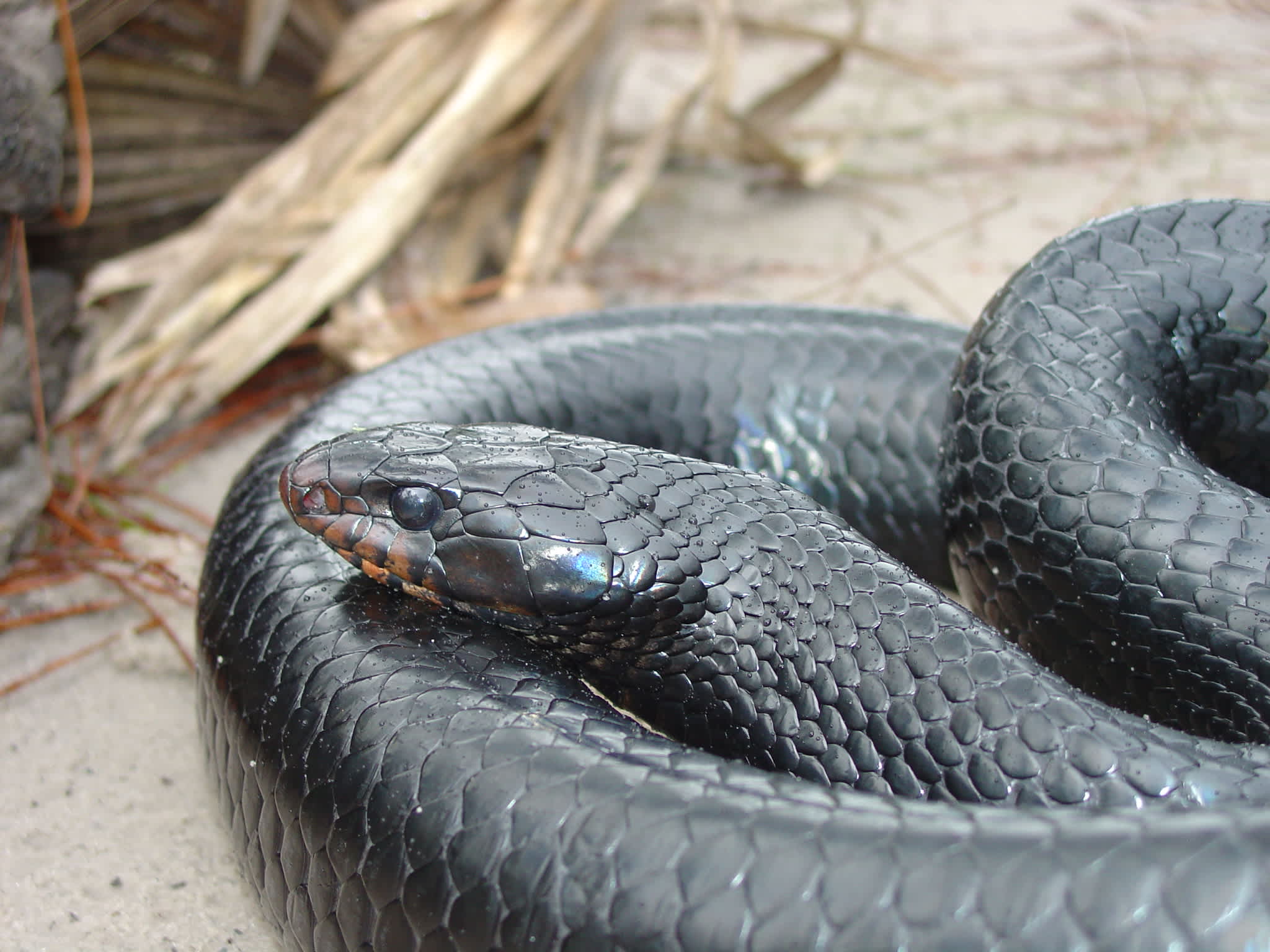Alabama Conservation Department Receives Partnerships Award for Indigo Snake Project
Alabama DCNR 10.31.12

The Alabama Department of Conservation and Natural Resources was recently recognized by the USDA-Forest Service (USFS) with a Partnerships Award for helping reintroduce the federally threatened Eastern indigo snake back into the state. The project, which has now introduced 78 wild indigo snakes into the Conecuh National Forest, began with the 2005 investigation of the status of the Eastern indigo snake in Alabama by the Division of Wildlife and Freshwater Fisheries staff.
Two years of intensive field investigation did not discover any indigo snakes in the wild in Alabama. Efforts then focused on a reintroduction phase of recovery of this federally listed species. That phase was made possible by partnerships with several additional organizations who have also received awards from the USFS. These include the Conecuh National Forest, Auburn University, the Georgia Department of Natural Resources, The Orianne Society, the U.S. Fish and Wildlife Service, Zoo Atlanta, and the U.S. Department of Defense.
“Without the full dedication of all partners involved, this restoration attempt would not have occurred for this imperiled species that had not been documented in Alabama for over 50 years,” said Fred Harders, acting director of the Alabama Division of Wildlife and Freshwater Fisheries.
Historically, the Eastern indigo snake lived throughout Florida, the coastal plain of southern Georgia, extreme south Alabama and extreme southeast Mississippi. Today, the indigo snake survives only in peninsular Florida and southeast Georgia. In all likelihood, it has been extirpated (no longer existing in the wild) from Alabama and Mississippi. In 1978 it was listed as “Threatened” by the U.S. Fish and Wildlife Service under the Endangered Species Act.
Some may wonder why an increase in this snake’s population is beneficial for the environment, but biologists say that a healthy population of Eastern indigo snakes in a longleaf pine forest setting is an indication of an ecologically functional forest. “The loss of this snake from Alabama and other areas is the loss of a significant part of the biodiversity of the forest. To return the Eastern indigo snake to the south Alabama landscape is to restore a piece of the natural history of the state,” said Nongame Wildlife Coordinator Mark Sasser.

